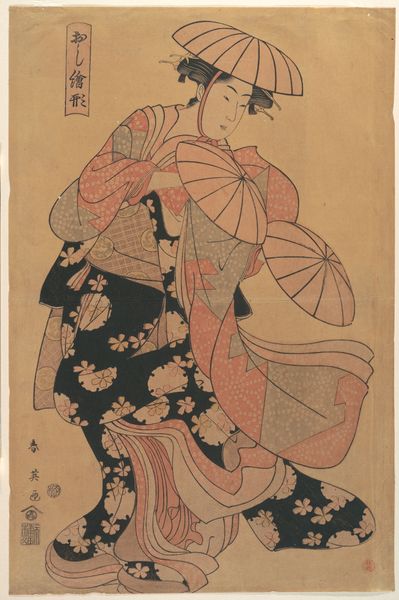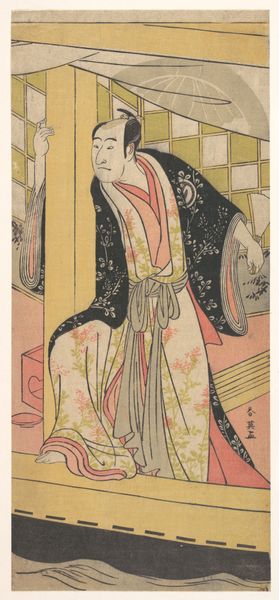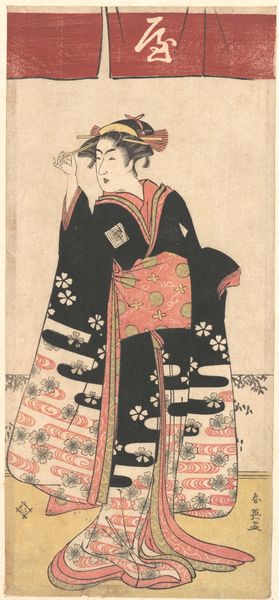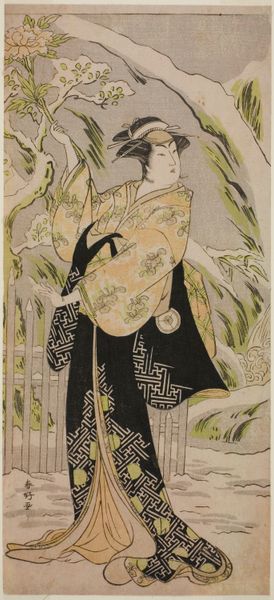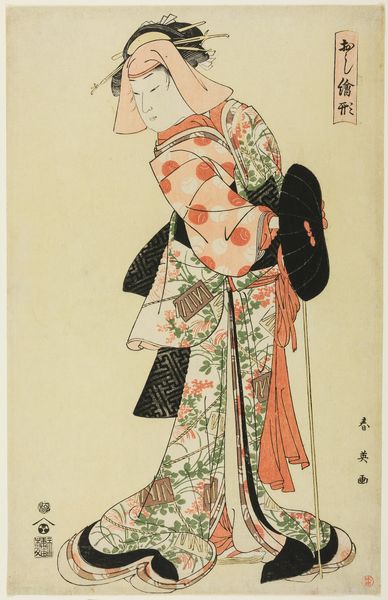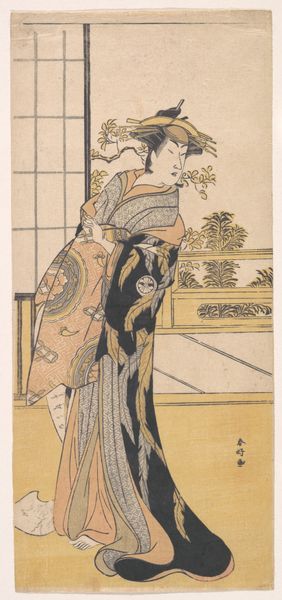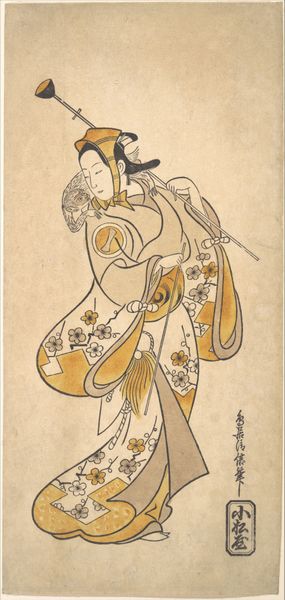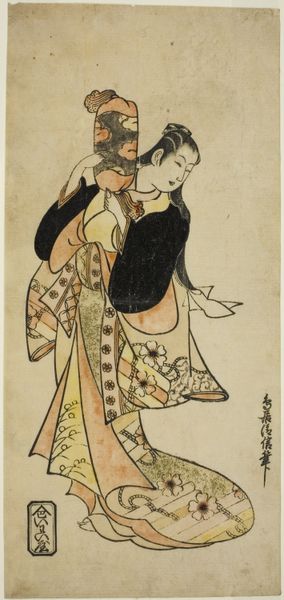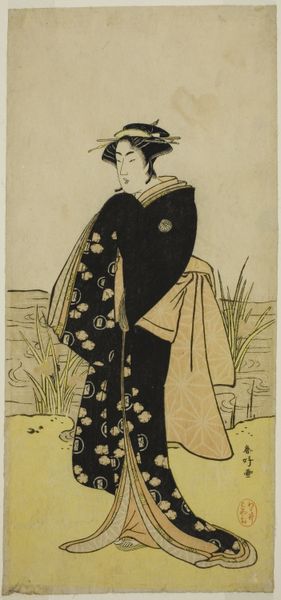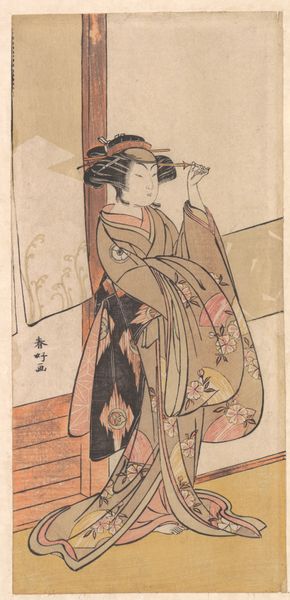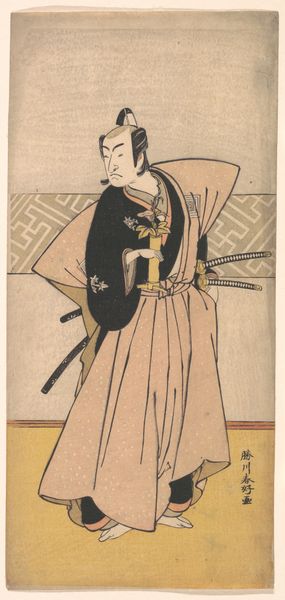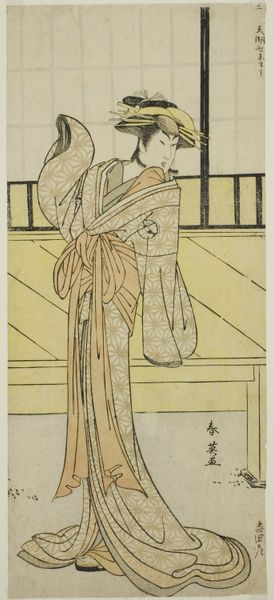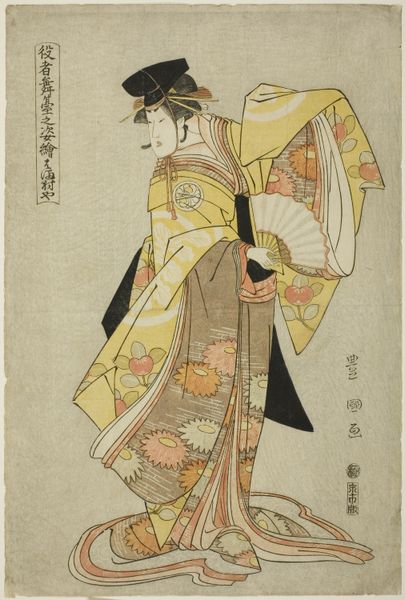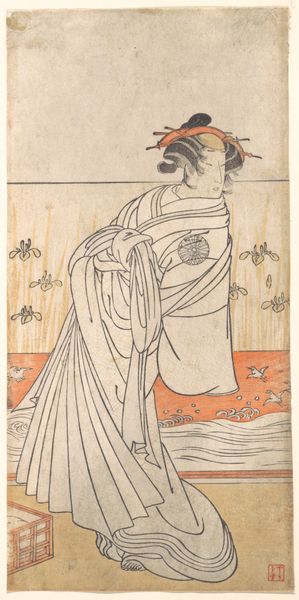
The Actor Ichikawa Yaozo III as Shiragiku in the Dance Sequence "Shinobu Uri" in the Play Hatsuhana Mimasu Soga, Performed at the Nakamura Theater in the First Month, 1785 c. 1785
0:00
0:00
print, ink
#
portrait
#
ink drawing
# print
#
asian-art
#
ukiyo-e
#
japan
#
figuration
#
ink
Dimensions: 29.7 × 14.2 cm (11 11/16 × 5 9/16 in.)
Copyright: Public Domain
Editor: This print by Katsukawa Shunko, dating from around 1785, depicts "The Actor Ichikawa Yaozo III as Shiragiku." There’s a stillness to the figure, yet the intricate patterns of the kimono give it such dynamism. What layers of meaning am I missing? Curator: Well, let's begin with thinking about gender and representation. Notice how a male actor is performing a female role. What does that say about the fluidity of identity within the social context of 18th century Japan, and what impact does that have on the community? This form of theatrical cross-dressing known as Onnagata had both liberating and restrictive aspects, as it blurred traditional gender roles but also often reinforced stereotypical images of women. Editor: That's really interesting! It makes me think about contemporary discussions around drag and gender performativity. Did the audience at the time read these performances in a similar way? Curator: In some ways, yes. There was an element of spectacle and artifice that was consciously embraced. Ukiyo-e prints like this one functioned as a form of celebrity culture, where fans could collect images of their favorite performers and reflect on their roles both on and off stage. So, we need to think about the power dynamics at play here - who is represented, and how? Editor: Thinking about this as a representation of both gender and celebrity definitely provides a deeper appreciation of this artwork. Curator: Absolutely. Art isn’t created in a vacuum. Considering its cultural and historical origins opens up a deeper understanding of its continued significance.
Comments
No comments
Be the first to comment and join the conversation on the ultimate creative platform.
